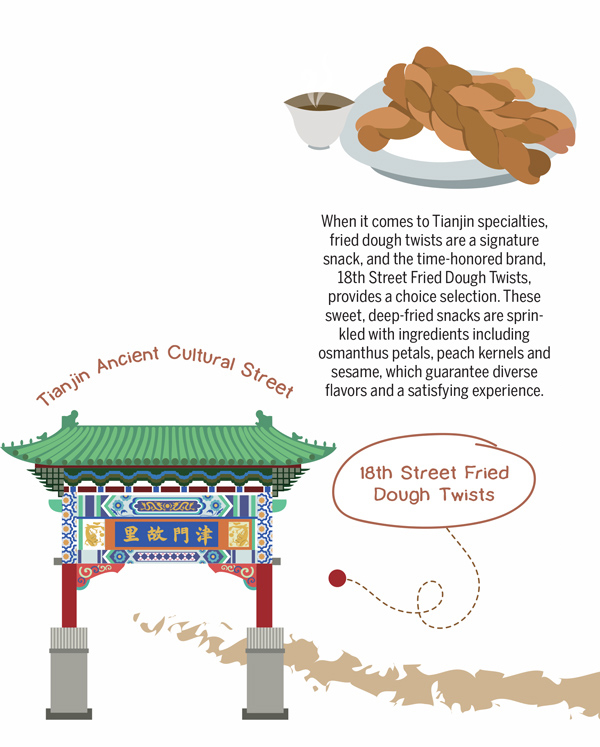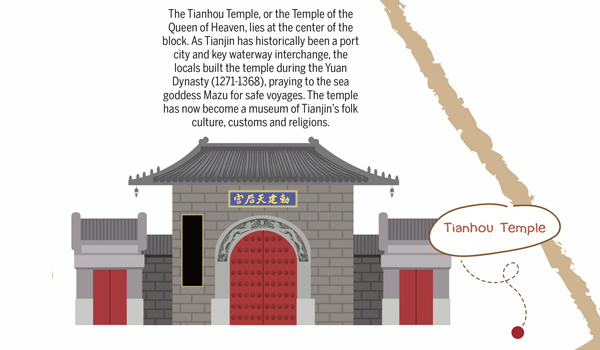

Lunchtime is a perfect moment to savor the many Tianjin delicacies available on the street, including Guoren Zhang (crunchy, coated varied nuts with diverse flavors), 18th Street Fried Dough Twists, pancake wraps, tea soup and stuffed buns.
In the afternoon, Yang recommends continuing to peruse the street's diverse array of stores, and the square at the block's center is an ideal place to take a rest.

Located beside the square are two sites dedicated to the sea goddess Mazu — the Tianhou Temple (Temple of the Queen of Heaven), built during the Yuan Dynasty (1271-1368), and the Peking Opera Theater, built in the Qing Dynasty (1644-1911).
Shows featuring local characteristics, including xiangsheng (traditional comedic crosstalk), stilts performances and folk dances, are frequently hosted on the square and on the theater's balcony.
Or, on the quieter days, visitors can simply sit at the foot of the theater and enjoy a clear view of the Haihe River.
Yang vividly remembers his first impression of the cultural street — it was New Year's Day, 1986, the first day that the block opened to the public after being renovated. A high school student at the time, he immediately visited the street after hearing the news of its reopening.
"Like me, so many people came to have a look that the entry had to be limited. I wanted to buy a cassette. It was very popular and difficult to find, and the street, which had just opened, included a rare record shop," he recalls.